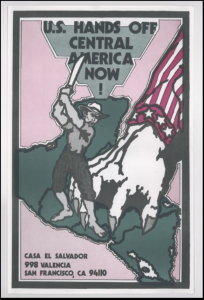3-5 Secondary Sources:
- Collins, Patricia Hill. Black Feminist Thought. Taylor and Francis, 2002.
- DuCille, Ann. “Phallus(Ies) of Interpretation: Toward Engendering the Black Critical ‘I.’” Callaloo, vol. 16, no. 3, 1993, pp. 559–573. JSTOR, JSTOR, www.jstor.org/stable/2932256.
- Ezell, Margaret. Writing Women’s Literary History. Johns Hopkins UP, 1993.
- Gates, Henry Louis. “’What’s Love Got to Do with It?’: Critical Theory, Integrity, and the Black Idiom.” New Literary History, vol. 18, no. 2, 1987, pp. 345-62. JSTOR, doi: 2307/468733.
- Hyot, Eric. “On Periodization.” On Literary Worlds.” Oxford UP, 2012.
Journal:
Callaloo (An African American Literature and Criticism Journal that focuses more on moderating canon inclusion, see DuCille’s piece above.)
Primary Sources:
- Fauset, Jessie Redmon. Plum Bun: A Novel without a Moral. Beacon, 1990.
- Huges, Langston and Zora Neale Hurston. Mule Bone: A Comedy of Negro Life. Harper Perennial, 1991.
- Lewis, David Levering, editor. The Portable Harlem Renaissance Reader. Penguin, 1994.
- Larsen, Nella. Quicksand. Negro Universities Press, 1969.
- Toomer, Jean. Cane. 3rd, Norton, 2011.
Keywords:
- Canon Formation
- Category Definition v. Reality
- Harlem Renaissance
Explanatory Essay:
For this assignment, I met with Professors Harris and Seiler because they have a lot of experience in the era I am fascinated by at this moment and would like to explore. I am interested in canon formation in general and the authors who do not fit the defined characteristics and subjects that have been accepted as that era’s hallmarks. While this can be applied to any time in literary history, the Harlem Renaissance is uniquely interesting for a few reasons. I am interested not only in canon as formulated by elites of the general literary establishment, but also the elites within nontraditional literary movements. Women played a huge role in the Harlem Renaissance movement through working with periodicals, writing, and bringing other artists together to those gatherings a current audience knows were sources of amazing inspiration and the germ for works we study today. The Harlem Renaissance was recent enough to provide a decent record of these women’s contributions, and I want to know how they were simultaneously accepted in the social scene and excluded from the list of names associated with this time’s work. What were their interactions with their male peers, who sometimes served as colleagues at publications? How did so many women get defined by one scandal, such as Larsen’s possible later-career plagiarism, as justification for not acknowledging their work’s quality? What do authors like Larsen, Zora Neale Hurston, and Jessie Redmane Fauset’s works say about other issues and themes than we see in black male narratives that traditionally make up the definition for that movement. I am starting here with some theory about canon formation from newer, black critics and more recursive ones. From there, I anticipate reading some of the movement’s own authors’ writing about the politics of the time along with their fictional work and its breadth of subject matter and emotional exploration. I want to explore the way other authors might change our understanding of the period and who was active within it. The formulation of the canon affects the writing of generations who study it, so what effect might a reformulation have on future writers reading and studying this period today?
Update:
My blog posts, particularly my examination of Henry Louis Gates’ piece, led me to add Ann DuCille’s article to my Secondary source list. I think that comparing their conflict to that of similarly gender-based racial disagreements of the Harlem Renaissance is interesting. One of my primary texts, Mule Bone is a joint effort by Zora Neale Hurston and Langston Hughes, and the edition includes essays and letters that show their arguments and tension I think allowed for some of the exclusion of black women’s writing from the initial pattern. It also speaks to the record of women’s deep involvement in the literary elite, which contradicts their initial representation in works remembered from that time. I include Nella Larsen and Jessie Redmon Fauset as two women who are still lagging in notoriety compared to Hurston, but that were similarly integral to the Harlem Renaissance elite. Jean Toomer’s Cane is an extremely woman-centric novel, and Toomer’s groundbreaking formal style and content which was very queer and sexual, was not met with common acceptance at its inception and has grown to prominence today. The Portable Harlem Renaissance Reader is a great source for shorter works and essays from key Harlem Renaissance figures and those who were overshadowed. I want to explore the themes, tropes, and literary strategies of these fictional works to identify what textual elements suppressed them and what led some to rise later, as well as the case study presented by the relationship between Hurston and Hughes.
